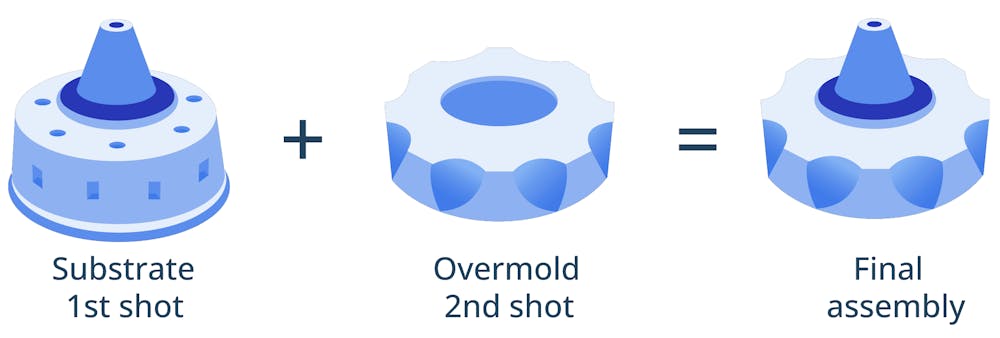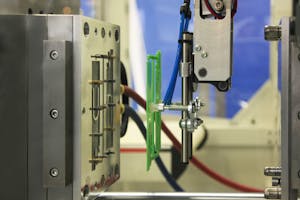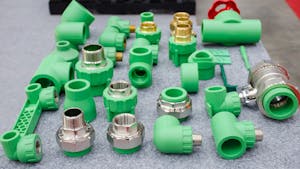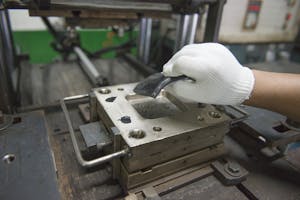Overmolding Service
Get high-quality custom overmolded products | Choose from a wide selection of materials and finishes | Project management and expert support included with every order
Custom Overmolding With Xometry
Xometry is a premier provider of custom overmolded components, offering high-quality, on-demand injection molding for both prototyping and production volumes.
We take a consultative approach to every injection molding project, ensuring we meet your specific requirements regardless of your team's level of experience. Our expertise extends to complex projects, including those incorporating side actions or hand-loaded inserts.
We are focused on providing long-term manufacturing solutions. Clients are supported by dedicated overmolding project managers and engineering experts who manage the entire process, from design validation to production. We service all industries, including specialized fields like medical injection molding, and offer both domestic US and China-based molding services.
How Overmolding Works
Overmolding is a versatile manufacturing process that bonds one material, usually a thermoplastic elastomer (TPE/TPV), to another material (typically a rigid plastic substrate) using injection molding equipment. This method delivers a powerful combination of aesthetics, haptics, and functional performance, providing benefits like superior grip, shock absorption, impact resistance, enhanced surface protection, and better chemical insulation for an improved tactile experience.

A key advantage of overmolding is its ability to seamlessly fuse multiple materials into a single, durable component through mechanical or chemical bonding. This technique is perfect for projects requiring customized designs, flexibility, or enhanced functionality, and it reduces manufacturing costs by consolidating parts into a single, integrated component.
Overmolding Materials
While TPEs like TPU and TPV are widely favored for overmolding due to their flexibility, durability, and strong bonding capabilities, other materials such as Nylon, Polypropylene (PP), and Polycarbonate (PC) are also popular choices for specific applications. The table below compares these commonly used overmolding materials, highlighting their unique properties and advantages.
| Overmolding Material | Common Applications | Properties | Compared to TPEs | Suitable Overmolding Techniques |
|---|---|---|---|---|
Overmolding Material Thermoplastic Vulcanizate (TPV) | Common Applications • Seals | Properties • Good chemical resistance | Compared to TPEs -- | Suitable Overmolding Techniques • Elastomer over rigid plastic |
Overmolding Material Thermoplastic Polyurethane (TPU) | Common Applications • Handles | Properties • High elasticity | Compared to TPEs -- | Suitable Overmolding Techniques • Elastomer over rigid plastic |
Overmolding Material Liquid Silicone Rubber (LSR) | Common Applications • Medical devices | Properties • Heat-resistant | Compared to TPEs More heat-resistant and biocompatible than TPEs, but less flexible and not as easy to bond with rigid plastics | Suitable Overmolding Techniques • Elastomer over rigid plastic |
Overmolding Material Polycarbonate (PC) | Common Applications • Electronics housings | Properties • High impact strength | Compared to TPEs Better impact strength and transparency; lacks softness and grip-enhancing properties | Suitable Overmolding Techniques • Rigid plastic over metal |
Overmolding Material Nylon (Polyamide, PA) | Common Applications • Overmolded metal parts | Properties • High strength • Rigidity • Resistance to wear • Suitable for bonding with softer materials | Compared to TPEs Higher strength and wear resistance, but lacks flexibility and softness | Suitable Overmolding Techniques • Rigid plastic over metal • Rigid plastic over rigid plastic |
Overmolding Material Polypropylene (PP) | Common Applications • Packaging • Consumer products | Properties • Low cost | Compared to TPEs More affordable, but generally less durable, flexible, and bondable. | Suitable Overmolding Techniques • Rigid plastic over metal |
Xometry's Overmolding Finishes
SPI Finishes
Range of finishes from Grade 3 diamond / high polish to 320 stone low polish. Finishes include: SPI A-1 SPI A-2 SPI A-3 SPI B-1 SPI B-2 SPI B-3 SPI C-1 SPI C-2 SPI C-3 SPI D-1 SPI D-2 SPI D-3
As Molded
No secondary polishing or grinding. Part will show tooling marks.
Other Mold Texturing
Xometry can match other mold textures upon request.
Overmolding Design Tips
- Wall thicknesses between 0.060" to 0.120" (1.5 mm-3 mm) generally provide the best bonding.
- Keeping radii between 0.020" or 0.5mm minimum in corners reduces localized stresses.
- Thick TPE sections should be cored out to minimize shrinkage, reduce the part weight, and lower cycle time.
- Avoid deep or unventable blind pockets or ribs in your design.
- Use gradual transitions between wall thickness to reduce or avoid problems with flow (back fills, gas traps, etc.)
- TPE/TPV overmolds should be less thick than the substrate to prevent warpage, especially if the part is flat, long, or both.
- Overmolding needs mechanical or chemical bonding to the substrate, so your overmold material choices should enable this.

Other Types of Injection Molding at Xometry

Custom Plastic Injection Molding Service

Insert Molding Service

Compression Molding Service
Why Choose Xometry for Overmolding?

Endless Options
Choose from millions of possible combinations of materials, finishes, tolerances, markings, and certifications for your order.

Easy to Use
Get your parts delivered right to your door without the hassle of sourcing, project management, logistics, or shipping.

Vetted Network
We are ISO 9001:2015, AS9100D, IATF 16949, and ISO 13485 certified. Only the top molding shops that apply to become suppliers pass our qualification process.